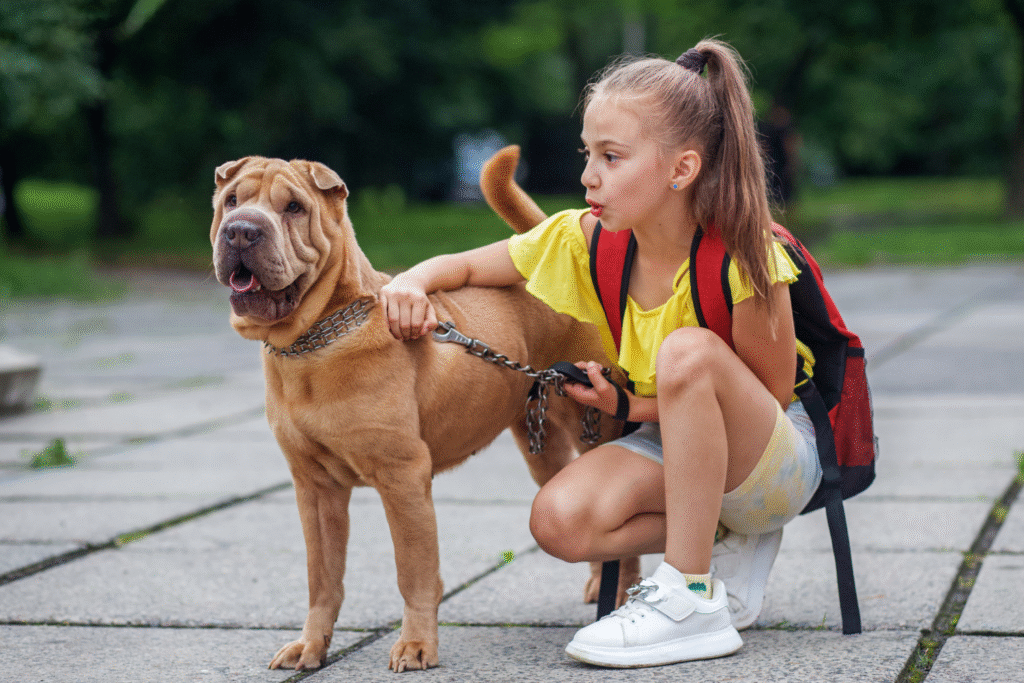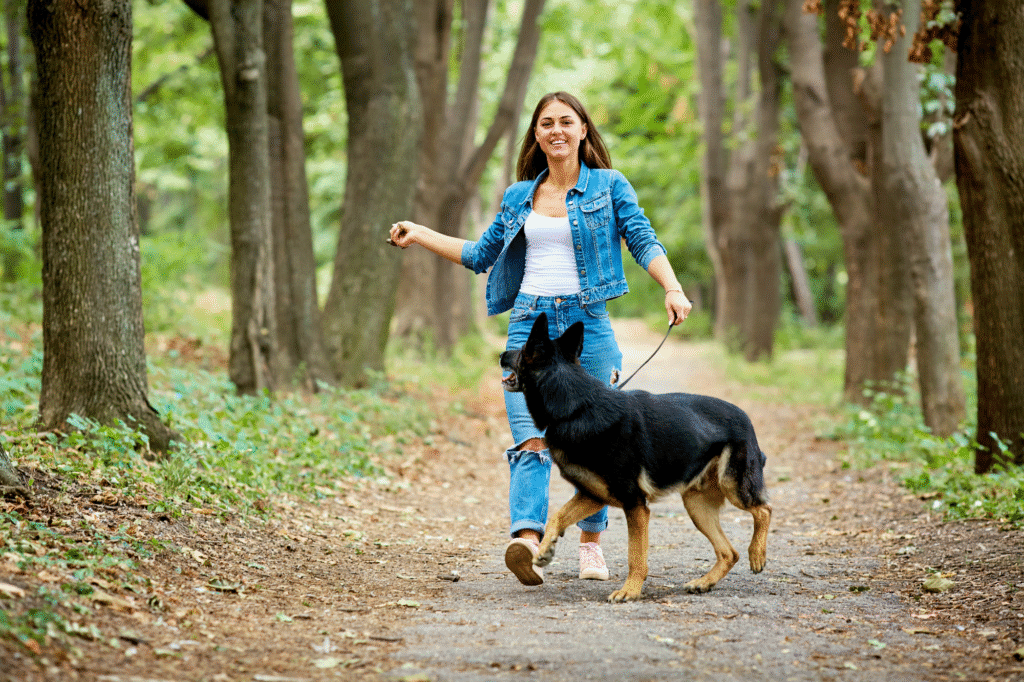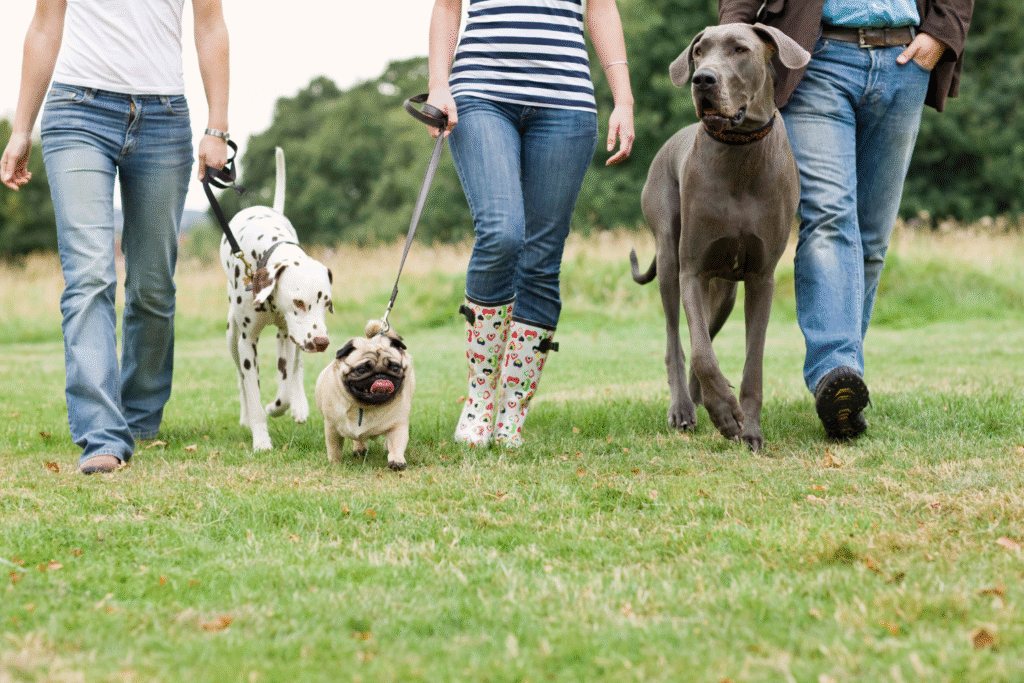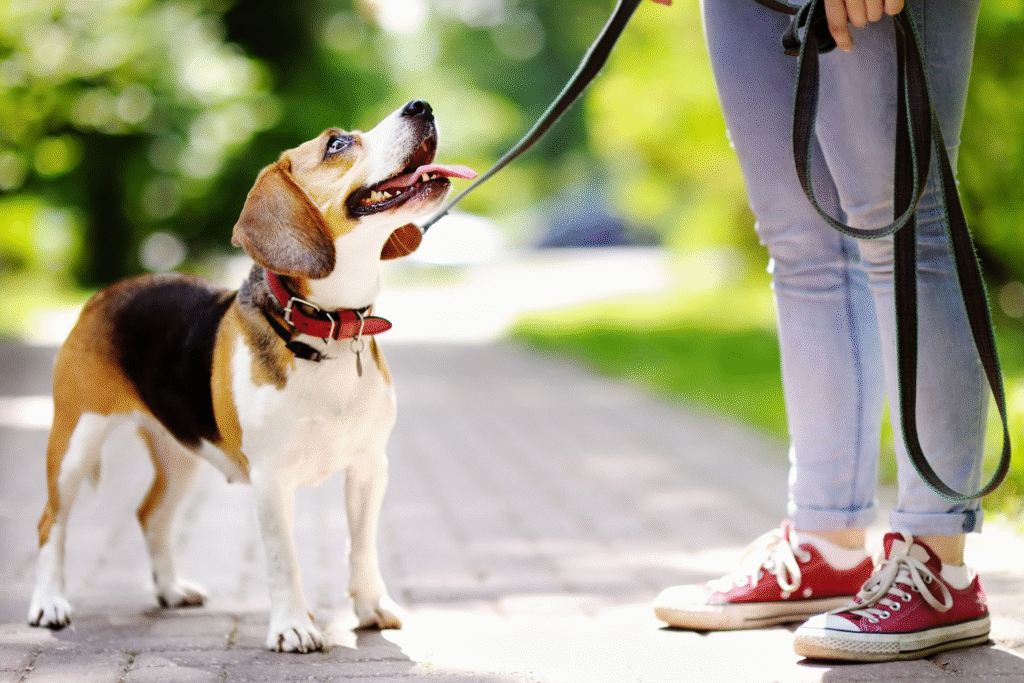These encounters require more strategy than you might think to avoid turning your peaceful walk into neighborhood drama.

Nothing ruins a relaxing dog walk quite like spotting an unleashed dog bounding toward you and your leashed pet while the owner casually strolls behind, completely oblivious to the chaos about to unfold. These situations happen more often than they should, and how you handle them can mean the difference between a minor inconvenience and a genuinely dangerous encounter that leaves everyone stressed, angry, or worse. The key lies in preparation, quick thinking, and knowing exactly what works.
1. Direct communication works better than passive-aggressive sighing from across the street.

According to the American Kennel Club’s guidelines on responsible dog ownership, most unleashed dog incidents stem from owners genuinely believing their pets are under perfect voice control rather than malicious disregard for leash laws. A simple, friendly approach like “Hey, could you leash your dog please? Mine gets nervous around unleashed dogs” often resolves the situation immediately. Many people comply quickly when they realize their choice affects other dogs, not just their own.
The key lies in tone and timing – catch them before the dogs interact rather than waiting until chaos erupts. Most reasonable dog owners want to avoid conflicts and will appreciate the heads-up about potential problems. This straightforward approach eliminates guesswork about your concerns and gives them a chance to be considerate neighbors rather than defensive adversaries who feel ambushed by criticism.
2. Strategic route changes prevent most confrontations before they begin.

Observing patterns in your neighborhood helps you identify houses, parks, or walking times where unleashed dogs commonly appear. Smart route planning means crossing the street, taking alternate paths, or timing your walks differently to avoid known problem areas entirely. Prevention beats confrontation every single time, especially when you’re trying to enjoy peaceful exercise rather than navigate tense social situations, as reported by the National Association of Professional Dog Trainers.
This approach requires some initial effort to map out problematic spots, but it pays dividends in stress reduction for both you and your dog. Regular walkers often develop mental databases of which houses have escape-artist dogs, which parks have lax enforcement, and which times of day bring out the most irresponsible owners. Working around these patterns becomes second nature after a few weeks of strategic planning.
3. Creating physical barriers buys time for better decision-making.

Positioning yourself between an approaching unleashed dog and your leashed pet gives you control over the interaction while you assess the situation. According to research published in the Journal of Veterinary Behavior, most dog-to-dog conflicts escalate when leashed dogs feel trapped or unable to retreat from social pressure. Using your body, a tree, a parked car, or any available obstacle creates space for everyone to calm down and think clearly.
This technique works especially well when combined with confident body language that signals you’re managing the situation rather than panicking about it. Dogs read human energy incredibly well, and your calm assertiveness often influences both animals to remain calmer than they might otherwise. The few extra seconds this barrier provides can mean the difference between a successful redirection and a full-blown incident that ruins everyone’s day.
4. Voice commands directed at the loose dog often work when owners fail to act.

Many well-trained dogs respond to basic commands from any human, especially when delivered with confidence and authority. A firm “sit” or “stay” can freeze an approaching dog long enough for you to create distance or for the owner to catch up and take control. This technique bypasses the irresponsible human entirely and appeals directly to the dog’s training.
The success of this approach depends heavily on the dog’s background and training level, but it’s worth attempting before situations escalate. Dogs accustomed to obedience work often default to following clear human direction, regardless of who gives the command. Even if the dog doesn’t follow through perfectly, the moment of hesitation usually provides enough time to implement other strategies or for the owner to finally intervene effectively.
5. Documentation becomes crucial when repeated encounters turn into ongoing neighborhood issues.

Taking photos or videos of repeat offenders provides evidence for animal control complaints, homeowners association reports, or potential legal issues if injuries occur later. Most people modify their behavior quickly when they realize their actions are being documented and could have consequences beyond casual social disapproval. The camera often motivates immediate leash compliance where polite requests failed.
This strategy works best when combined with knowledge of local leash laws and ordinances that you can reference if questioned about your documentation efforts. Keep records of dates, times, locations, and any interactions or incidents that occur. This information becomes invaluable if you need to file formal complaints or if animal control officers need details about ongoing problems in specific areas.
6. Treats serve as diplomatic tools that benefit everyone involved in tense situations.

Carrying high-value treats allows you to redirect an unleashed dog’s attention away from your pet and toward you, often defusing potential conflicts before they escalate. This approach works particularly well with friendly but poorly supervised dogs who are more interested in social interaction than aggression. Offering treats also demonstrates goodwill toward the owner while solving the immediate problem.
However, this strategy requires reading the approaching dog’s body language carefully to ensure you’re dealing with a social butterfly rather than a genuinely aggressive animal. Never attempt to treat-redirect dogs showing signs of aggression, fear, or intense prey drive. Save this technique for bouncy, overly enthusiastic pets whose main crime is poor impulse control rather than malicious intent toward you or your dog.
7. Alliance building with other responsible dog owners creates neighborhood accountability.

Connecting with like-minded neighbors who also walk leashed dogs creates informal support networks that can address problem owners through collective action rather than individual confrontations. Group pressure often succeeds where individual complaints fail, especially when multiple people document the same problematic behaviors from the same sources. Safety in numbers applies to social situations just as much as physical ones.
These alliances also provide witnesses if incidents occur and moral support for filing complaints or approaching problem owners directly. Many people who ignore individual requests suddenly become cooperative when they realize the entire neighborhood is paying attention to their behavior. Coordinated documentation efforts and group complaints carry much more weight with animal control officers and local authorities.
8. Legal knowledge transforms you from complainer into informed advocate for community safety.

Understanding local leash laws, liability issues, and enforcement procedures gives you concrete talking points when addressing irresponsible owners rather than relying on general frustration or personal preferences. Most cities have specific ordinances about leash requirements, and knowing the exact wording helps you communicate expectations clearly. This knowledge also helps you determine when situations warrant official intervention.
Research your local animal control procedures, complaint processes, and typical enforcement timelines so you can set realistic expectations about outcomes. Some areas have strong enforcement while others barely respond to complaints, and knowing these realities helps you choose appropriate strategies. Legal awareness also protects you if incidents occur and liability questions arise later.
9. Professional intervention provides solutions when DIY approaches reach their limits.

Sometimes neighborhood problems require outside expertise from animal control officers, professional dog trainers, or community mediators who can address situations objectively without personal emotional investment. These professionals have tools, authority, and experience that individual residents simply can’t match when dealing with persistently irresponsible dog owners. Knowing when to escalate prevents minor annoyances from becoming major safety hazards.
Professional intervention becomes especially important when unleashed dogs show aggressive tendencies, when owners become hostile about requests for compliance, or when multiple incidents suggest escalating problems rather than isolated mistakes. Animal control officers can enforce laws that neighbors cannot, and professional trainers can sometimes reach dog owners who dismiss advice from fellow pet parents. Sometimes calling in the experts saves relationships while solving problems more effectively than continued amateur diplomacy.
